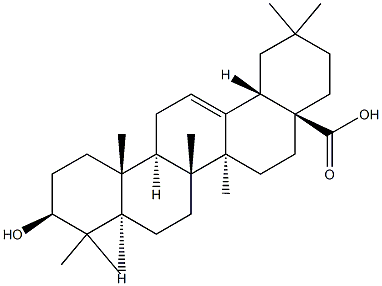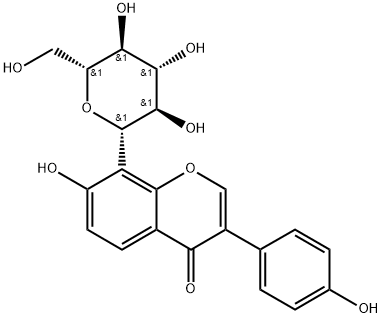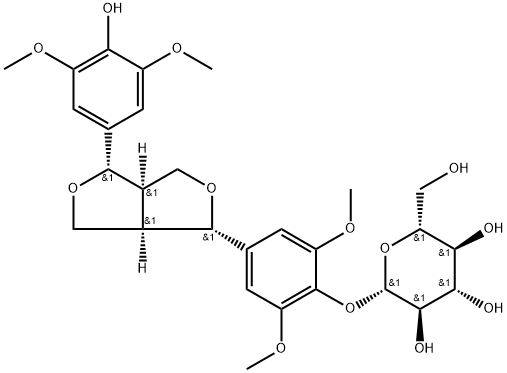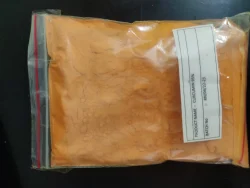TURMERIC
- Empirical Formula: C21H20O6
- Molecular Weight: 368.38
- MDL number: MFCD06795230
- EINECS: 207-280-5
- Update Date: 2023-04-23 13:52:06

What is TURMERIC?
Chemical properties
Several species of Curcuma exist: C. xanthorrhyza, C. domestica, C. zedoafia, C. caesia and C. amada. Although all these are aromatic plants, C. longa is the one used as a flavor ingredient. The plant is originally from southern Asia and is widespread throughout India, Malaysia, Ceylon and Japan. It is a perennial herb whose rhizome yields (like that of ginger, which it also resembles) climbing stalks with leaves only or with leaves and flowers. Reproduction occurs through the splitting of the rhizome, which is the only part used (dried rhizome as is or after previously boiling in water). Turmeric has a spicy, fresh odor reminiscent of sweet orange and ginger and a slightly pungent, bitter flavor.
Physical properties
The essential oil of C. longa is obtained by steam distillation, with yields ranging between 1.3 and 5.5%. It is a yellow liquid with a spicy odor. The essential oil of C. zedoatia Roscoe is also obtained by steam distillation with variable yields (1 to 15%). It is a greenish liquid exhibiting a spicy odor.
Occurrence
Turmeric is found in the Far East and tropical regions.
The Uses of TURMERIC
Turmeric is a spice and colorant that is the rhizome or root of curcuma longa. as a spice, it has a taste related to mustard. as a veg- etable color, it has a bright yellow to greenish-yellow hue. the yel- low pigment is curcumin. it is water miscible and has excellent heat stability, poor light and ph stability, and good tinctorial strength. it exists as an extract and oleoresin. it is used in meat, poultry, fish, and rice dishes.
The Uses of TURMERIC
turmeric (Curcuma longa) is healing, tonic, mildly stimulating, antiinflammatory, and has blood-purifying properties. It is also used to perfume or mask product odor. This common spice (used frequently in curry) and coloring agent is used in traditional medicine for a variety of curative purposes, including the treatment of eczema, skin infections, ulcers, burns, and rashes. It may have skinsoftening properties and could be beneficial in products for acne.
Anticancer Research
In Ayurvedic practices, this has been used as attempted treatment for a variety ofinternal disorders such as indigestion, throat infection, and the common cold(Kapoor 2000). Curcumin is the active ingredient in the turmeric, and research hasdemonstrated that when colon cancer cells are pre-exposed to curcumin and thentreated with silymarin, the cells undergo a higher rate of cell death (Akram et al.2010). Some herbalists use turmeric to prevent and treat colon cancer. There is noabsolute administration of turmeric dosage to treat colorectal cancer, but the lowcancer rate in India may be related to turmeric consumption in most people’s diets(Potter et al. 1993; Mohandas and Desai 1998).
Safety Profile
Human mutation data reported. When heated to decomposition it emits acrid smoke and irritating fumes.
Properties of TURMERIC
| Melting point: | 175-180 °C |
| vapor density | 13 (vs air) |
| refractive index | 1.4155-1.4175 |
| storage temp. | −20°C |
| solubility | ethanol: 10 mg/mL |
| form | powder |
| color | orange |
Safety information for TURMERIC
Computed Descriptors for TURMERIC
New Products
4,4-Difluoropiperidine hydrochloride tert-butyl 9-methoxy-3-azaspiro[5.5]undecane-3-carboxylate Indole Methyl Resin N-Isopropylurea N,N-Dicyclohexylcarbodiimide(DCC) MELDRUMS ACID 5-METHYLISOXAZOLE-4-CARBOXYLIC ACID Magnessium Bis glycinate Zinc ascorbate 1-bromo-2-butyne 2-acetamidophenol 9(10H)-anthracenone Erythrosin B, 4-Piperidinopiperidine 2-((4-morpholinophenylamino) (methylthio) methylene) malononitrile 2,4-dihydroxybenzaldehyde 3-(4-morpholinophenylamino)-5-amino-1H-pyrazole-4-carbonitrile Methyl 2-methylquinoline-6-carboxylate 2,6-dichloro-4-nitropyridine 4-Bromo-2-chlorobenzonitrile 2-(benzylamino)acetic acid hydrochloride 4-(tert-Butoxycarbonylamino)but- 2-ynoic acid 3,4-dihydro-2H-benzo[b][1,4]dioxepine 1-Phenyl-1-cycloprppanecarboxylicacidRelated products of tetrahydrofuran








You may like
-
 CURCUMINE USP Herble CAS No. 458-37-7, 50 kg, PowderView Details
CURCUMINE USP Herble CAS No. 458-37-7, 50 kg, PowderView Details
458-37-7 -
 3-(4-amino-1-oxoisoindolin-2-yl)-1-methylpiperidine-2,6-dione 98%View Details
3-(4-amino-1-oxoisoindolin-2-yl)-1-methylpiperidine-2,6-dione 98%View Details -
 614-19-7 98%View Details
614-19-7 98%View Details
614-19-7 -
 3112-85-4 Methyl phenyl sulfone 98%View Details
3112-85-4 Methyl phenyl sulfone 98%View Details
3112-85-4 -
 20677-73-0 (2,2-diethoxyethyl)methylamine 98%View Details
20677-73-0 (2,2-diethoxyethyl)methylamine 98%View Details
20677-73-0 -
 3-(4-(hydroxyamino)-1-oxoisoindolin-2-yl)piperidine-2,6-dione 98%View Details
3-(4-(hydroxyamino)-1-oxoisoindolin-2-yl)piperidine-2,6-dione 98%View Details -
 57381-49-4 2-bromo-4-chlorobenzonitrile 98%View Details
57381-49-4 2-bromo-4-chlorobenzonitrile 98%View Details
57381-49-4 -
 4,6-dichloropyrimidine-5-carbaldehyde 98%View Details
4,6-dichloropyrimidine-5-carbaldehyde 98%View Details
5305-40-8
